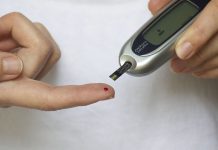
Sushi is going to vary greatly from restaurant to restaurant depending on the fish, seaweed, rice, and other vegetable ingredients. Generally, sushi is low in fat (if made from raw fish) and low in fiber due to the use of white rice though seaweed and other vegetables will add some fiber. The fish (salmon, tuna) can be high in omega 3 fats which is good for heart health.
If you want to just eat raw fish, try sashimi and ask for a bowl of rice on the side. Usually, sushi and sashimi are served with wasabi (105 milligrams per teaspoon) and many people dip sushi in soy sauce (920 milligrams sodium per tablespoon) before eating. Soy sauce is high in sodium and there is lite soy sauce available with reduced sodium (575 milligrams per tablespoon) which is still too high for persons with high blood pressure.
I would suggest you use nutrition analysis software which has the nutrient content of foods (including restaurant menu items) and allows you to build a sushi recipe with ingredients. With my programmers, I developed My Food Record with the latest formulas, food, and exercise data that will provide nutrient analysis of food and beverages you eat.



